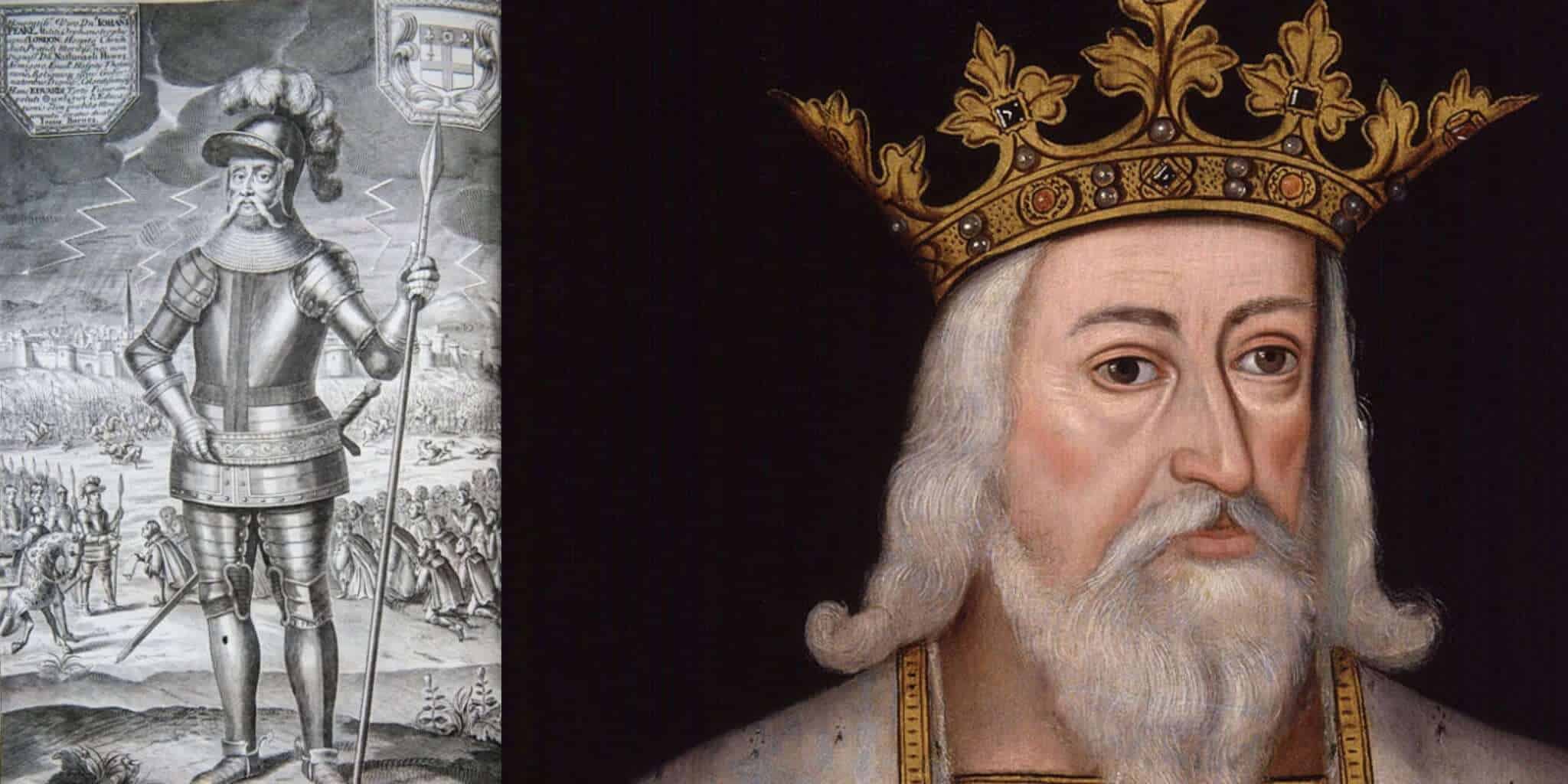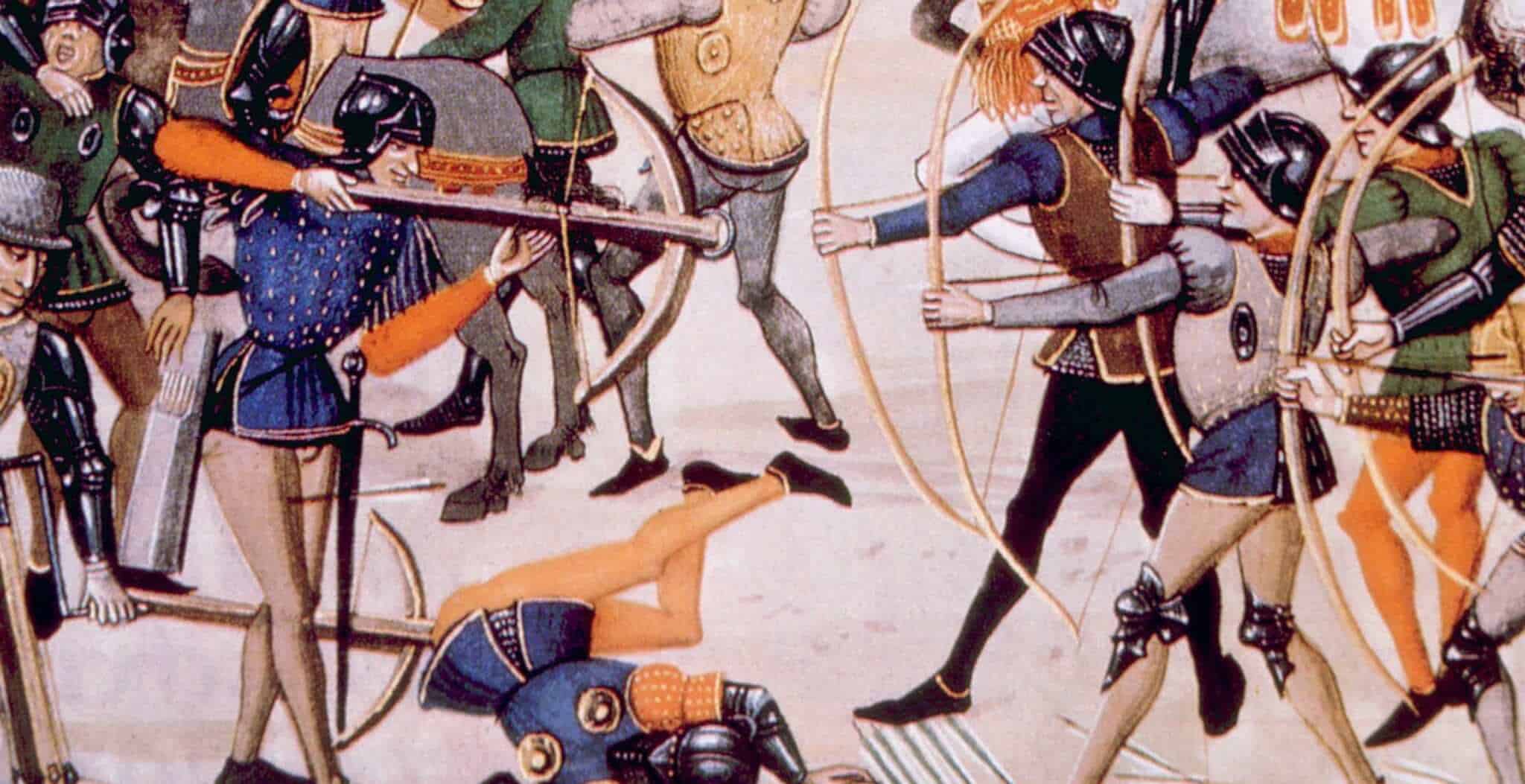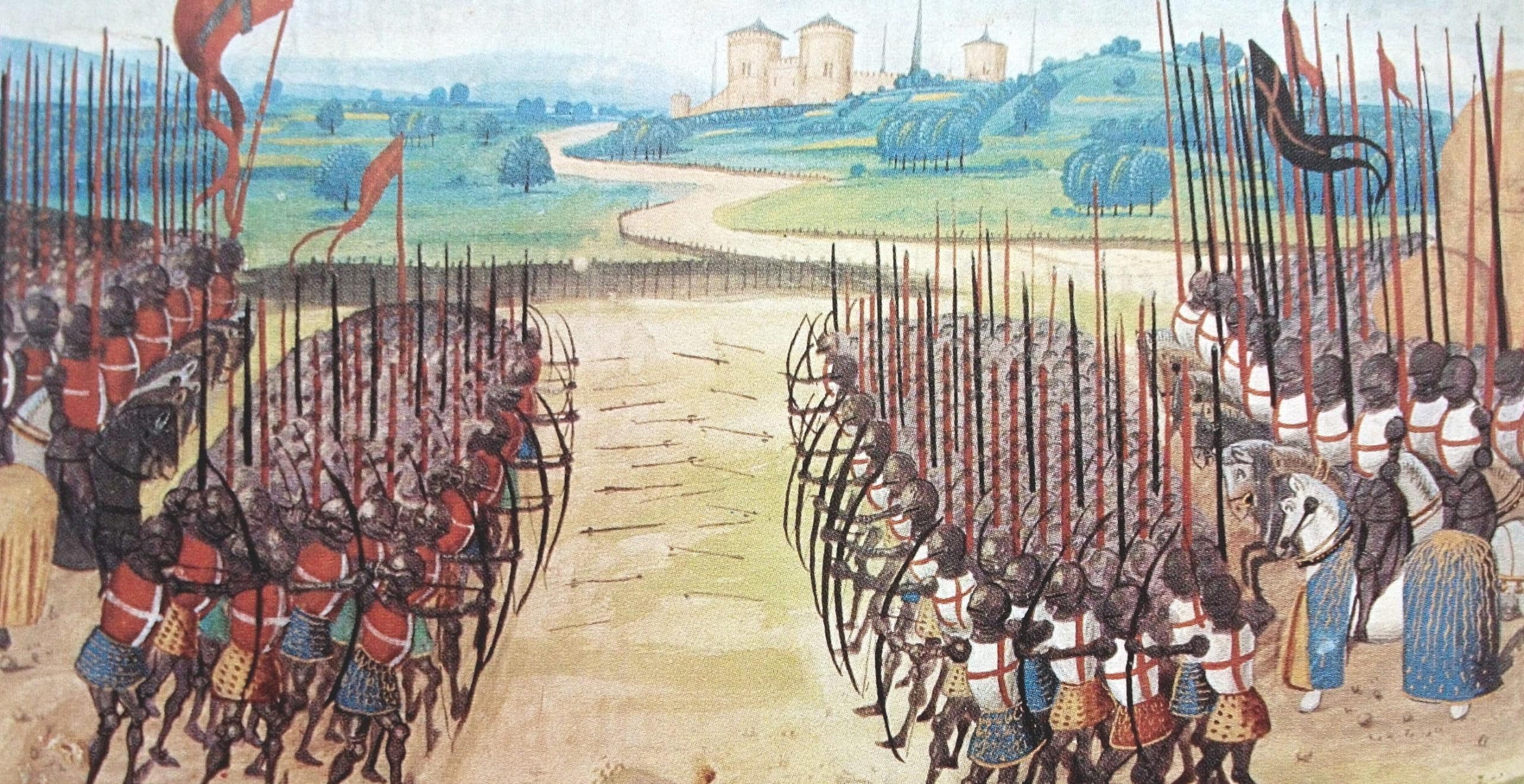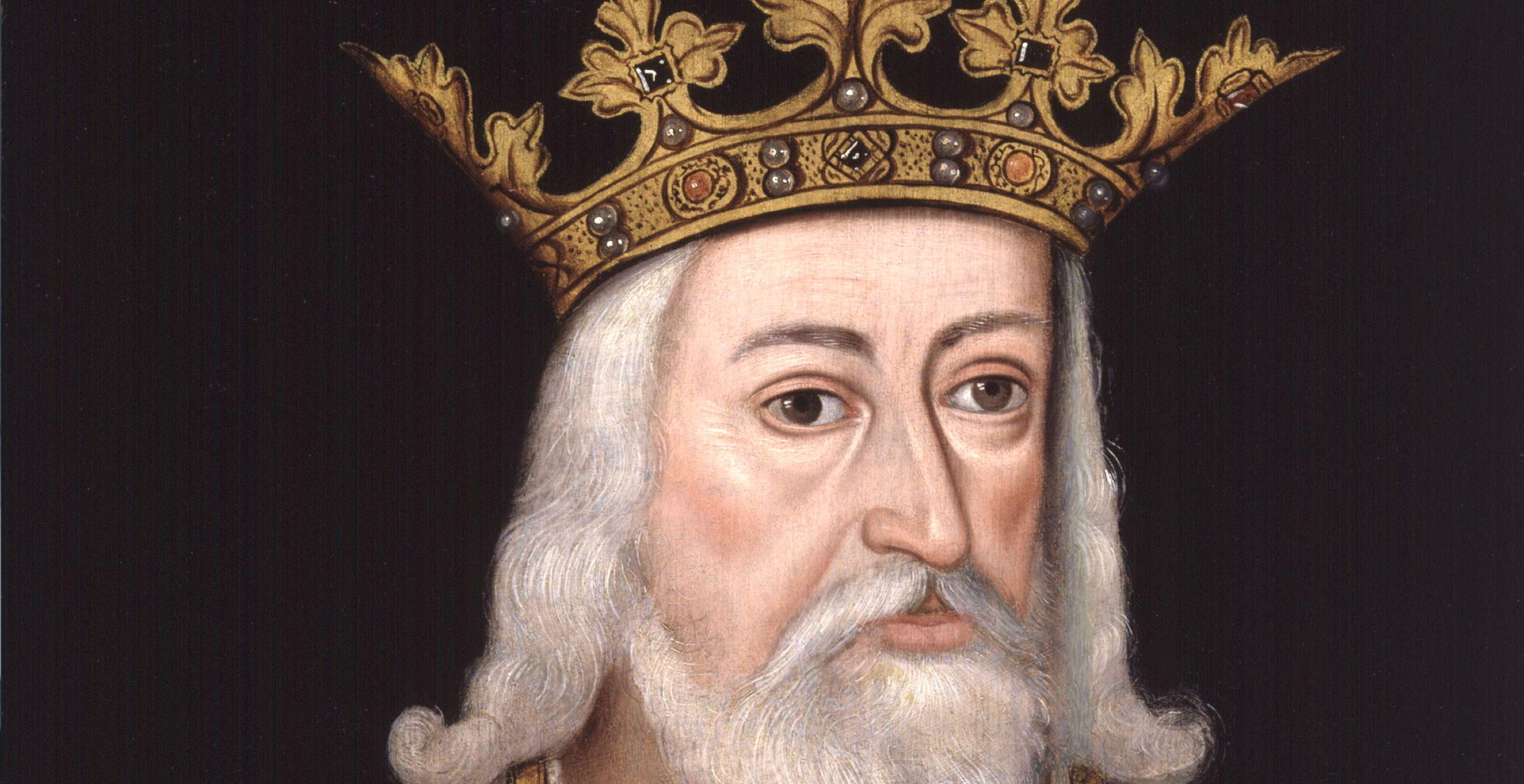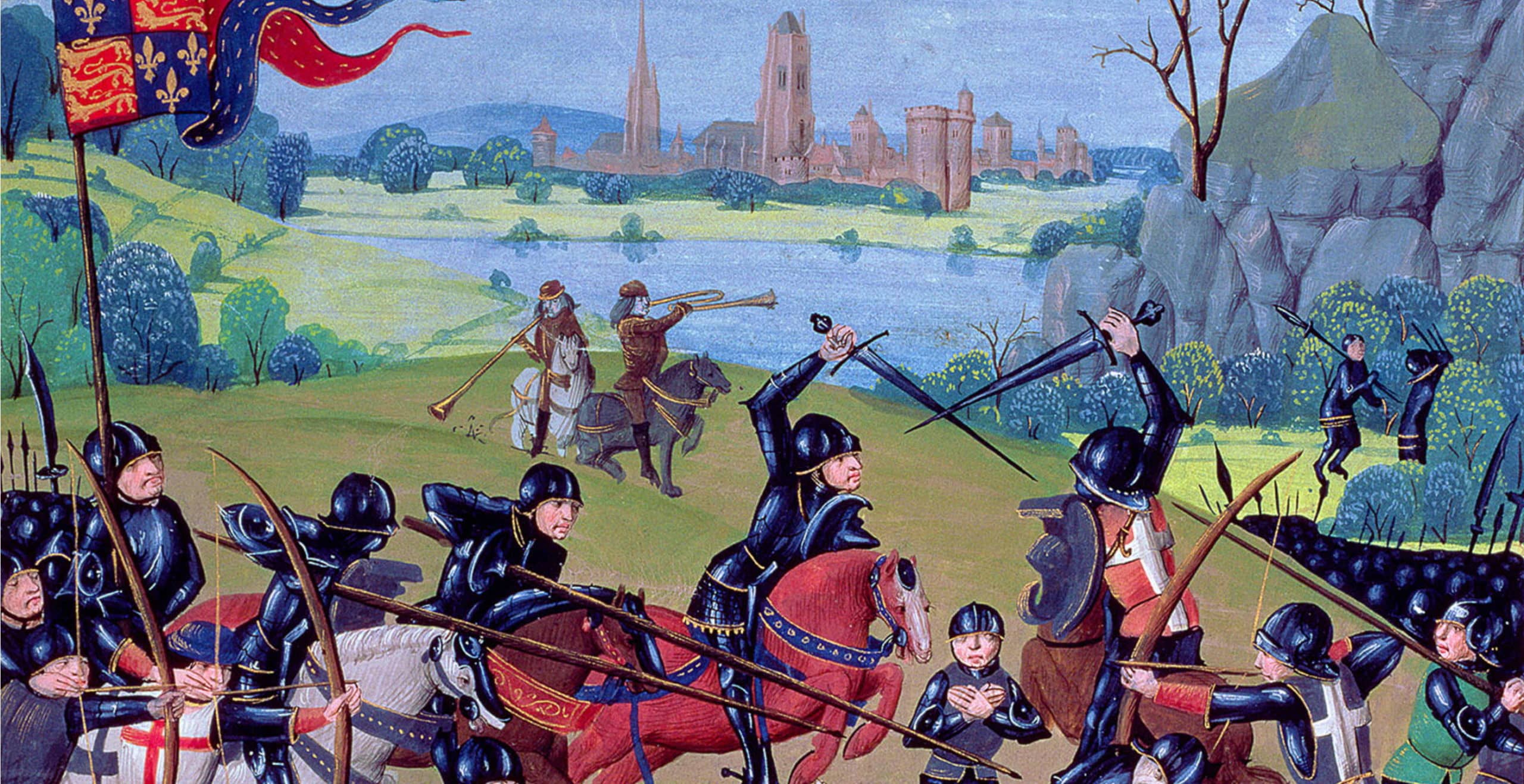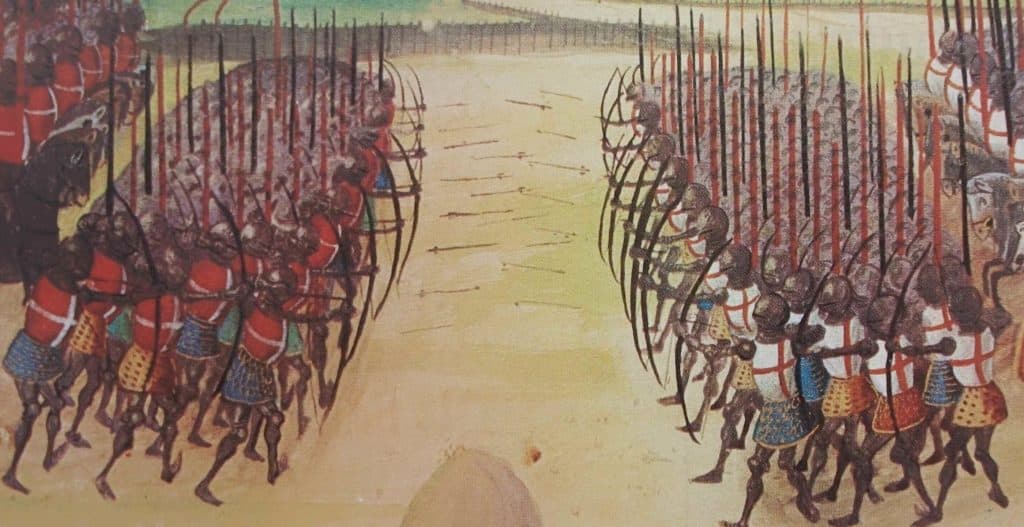“It was not for nothing that my nose fell a-bleeding on Black Monday last, at six o’clock i’ the morning.” William Shakespeare, ‘The Merchant of Venice’, ii. 5
‘Black Monday’ refers to Easter Monday, 13th April 1360, so-called after a freak hail storm killed over 1,000 English soldiers during the Hundred Years’ War between England and France.
This terrible storm produced more casualties than any previous battle of the war.
The Hundred Years War had started back in 1337 and was a struggle between England and France over who should control France. In October 1359, Edward III of England crossed the English Channel to France with a huge invading force. By 13th April he had sacked and burned the suburbs of Paris and was now besieging the town of Chartres.
As night fell, a sudden storm blew up. Edward’s troops were camped outside the town and their tents were no match for the tempest that would follow. A huge drop in temperature was followed by lightning, freezing rain, high winds and huge hailstones* which pelted both man and horse. The soldiers screamed in fear and panic as their startled horses stampeded.
The carnage was described as “a foul day, full of myst and hayle, so that men dyed on horseback [sic].”
There was no escape from the killer storm: tents were torn apart by the howling wind, soldiers fled in panic, two of the English commanders were killed and the king was forced to his knees, pleading with God for mercy.
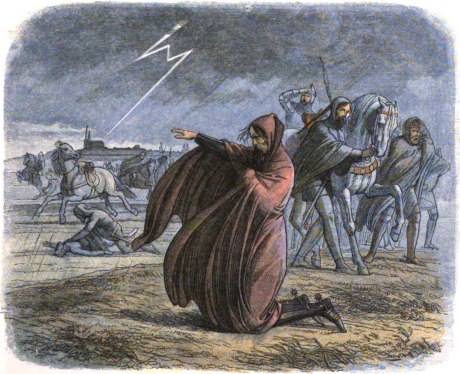
It took just half an hour for the storm to kill over 1,000 Englishmen and some 6,000 horses.
Edward was convinced that the storm was a sign from God. He rushed to pursue peace with the French and as a direct result of the killer storm, on May 8th 1360 the Treaty of Bretigny was signed. By this treaty Edward agreed to renounce his claim to the throne of France in return for sovereignty over Aquitaine and Calais. The French agreed to pay a handsome ransom for the release of their king John II who was held captive in England.
The treaty marked the end of the first phase of the Hundred Years’ War, however the peace was short lived: war broke out again just nine years later.
*Hail consists of balls of ice or ice-pellets, usually produced during a thunderstorm. Hailstones can be 2 inches or larger in diameter and can fall as fast as 100 miles an hour. When driven by high winds, large hailstones are capable of causing great damage.
